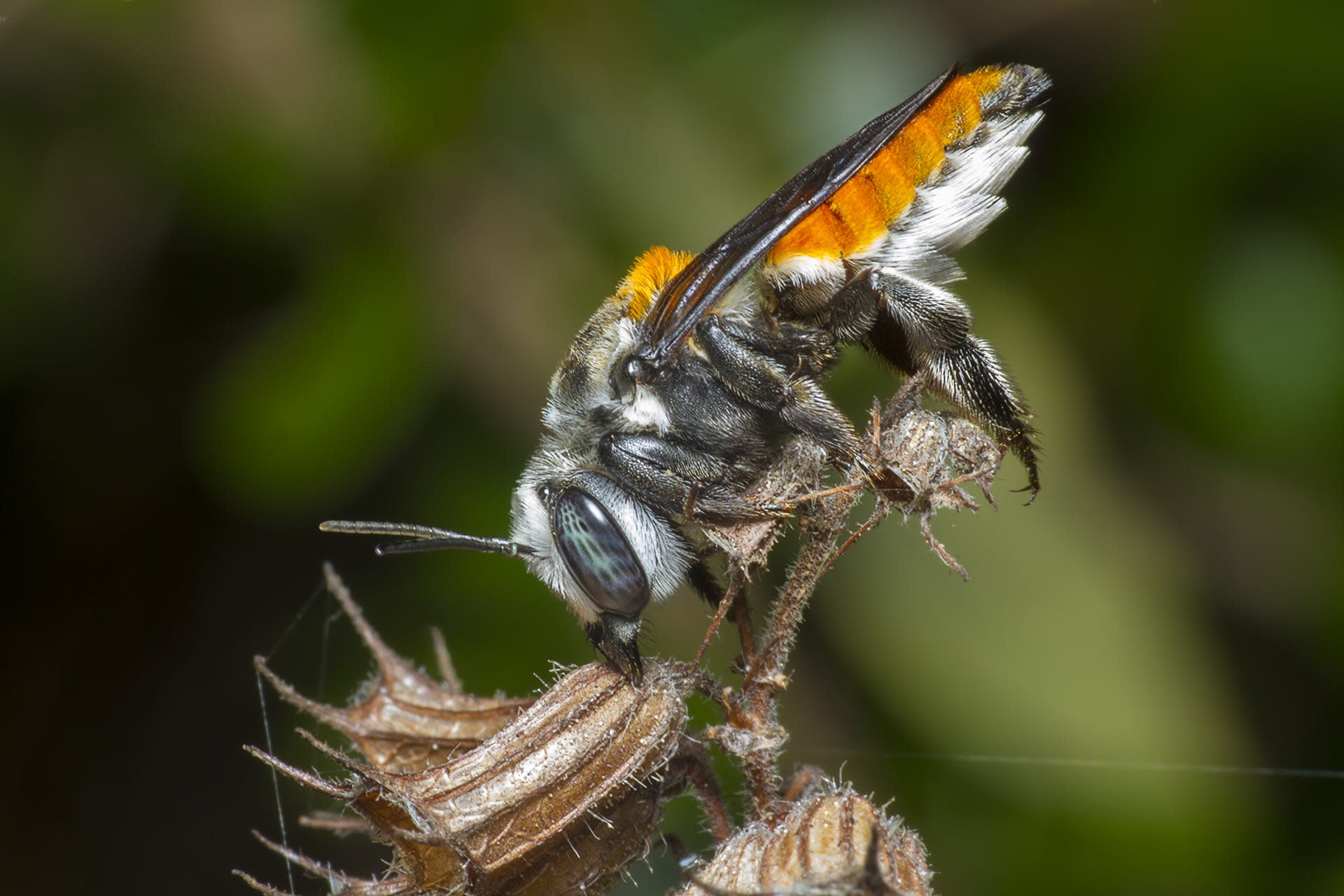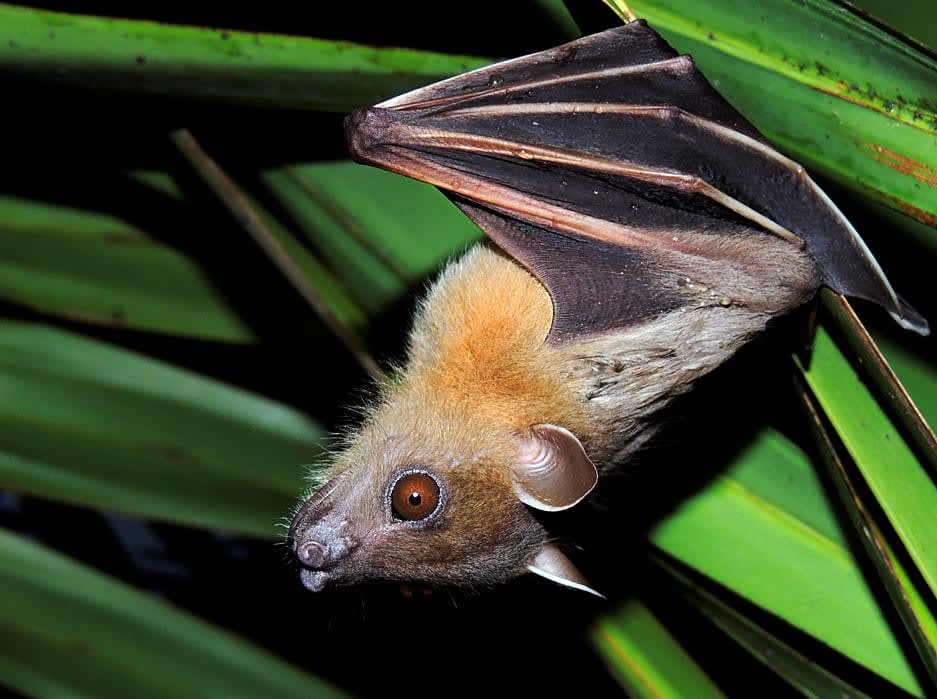 Listen to this article
•
15:34 min
Listen to this article
•
15:34 min
Following the missive, in which I wrote about championing the cause of garden critters to my father — who considers most garden critters to be pests — I am happy to report that I caught him getting quite interested in the lives of the bees that have taken up residence in our garden.
My mother is a little harder to convince. It will not be long, I am sure, before she realises that she now has to look past a cloud of stingless bees over our gate (they’re stingless, ma), a cuckoo bee protectively hovering near our front door (she’s a little fond of this one, I like to think), an unkempt garden, a visiting short-nosed fruit bat, and bat poop that has, much to her dismay, spattered a few walls of our house in Bangalore. I may not remind her that the Singapore cherry tree in our garden would not have landed there, if it were not for the bats. Because the same tree now attracts the very fruit bats that bespatter their poop on the walls of our house.
Photos: Snehalata/Shutterstock (left), Shantanu Kuveskar, CC BY-SA 3.0 (right)
Cover photo: A leaf-cutter bee, Megachildae sp. with pollen in its in belly. These little bees are essential pollinators. After building her nest with leaves, the female bee transfers pollen from its belly to the nest for the larvae to feed on once they hatch. Cover photo: Hayath Mohammed
Soon, I can sense, she will be up in arms about these developments. And where there were mildly curious sparks of interest in my father’s eyes, I will be met with my mother’s steely gaze. This is the same lady who, by the way, cleans and refills a water bath for birds in our balcony, and smiles indulgently at the bulbuls, doves and magpie robins that come to drink from it.
No, I will need a different set of tactics to attempt any critter-evangelising with my mother.
For now though, I am quite chuffed about the bees. I had only seen the signs left by leaf-cutter bees before. Tell-tale, neat cuts in leaves.
So I am thrilled one morning, when I take my mug of coffee into our verandah, and catch sight of something flying towards me, carrying something green. As I watch it, it makes its way to a cactus pot and disappears into it. The green something that it was carrying, I notice, is a leaf.
This needs investigation. I put my coffee aside and sit down to get a better look. There is a rose-like arrangement of leaves in a corner of the cactus pot, with the backside of a bee busily dancing around in the middle of it.
Photos: Jithesh Pai (left), Hayath Mohammed (right)
It’s a leaf-cutter bee making her nest! I announce, to whoever will listen.
Once the bee seems satisfied with her arrangement, she comes out and flies away to the bushes outside my neighbour’s house. And then comes back with another leaf folded between her legs. This goes on for a while.
My father looks up leaf-cutter bees on his phone and shows me the structure of her nest. He comes and stands next to me every few minutes, to watch her at work, while I beam inwardly at his interest.
After the bee seems content with her nest, she comes to the nest with her abdomen covered in pollen. She uses her hind legs to transfer the pollen into the nest. At some point before she seals the nest, she will have laid her eggs in it. And when the larvae hatch, they will have pollen to feed on.
If there were any doubt about the inestimable services bees provide us, or any haziness about the intertwined lives of plants and pollinators, that bright golden pollen that sticks to the underside of the leaf cutter bee’s belly — perhaps collected from multiple flowers which invite the bee to pollinate it — would be evidence enough.
Or if you prefer numbers, here are a few: close to 90% of wild flowering plants and 75% of our food crops rely on animal pollinators like bees, at least to some extent, to produce seeds. Many countries have begun monitoring the status of bees and other pollinators after a worrying collapse in honey bee colonies in the United States and a decline of animal pollinators in North America and Europe. But in India, we still do not have a handle on the status of pollinator populations. There are signs, however, that they are declining, and the likely causes of their decline — land-use change, environmental pollution, pesticide use, climate change — continue unabated.
My dad seems fascinated with the leaf-cutter bee, and even places a few leaves from our garden next to it, to see if it would choose them (more proud beaming!). She does not, though. She proceeds to construct a second nest next to the first.
There is a lot of activity happening around this time. A fly has drowned in the coffee mug that I left unattended, a procession of ants are making their way into the cactus pot.
And…
A very inquisitive something is madly flying about. It seems to be suspicious of me and circles me when I make small movements. It flies in wide circles around the leaf-cutter bee who is provisioning her nest with pollen. When it sits close to the cactus pot, I realise that it is a different bee species. It is the leaf-cutting cuckoo bee, one of evolution’s most cold and calculating opportunists. The cuckoo bee parasitises the nests of leaf-cutter bees, making use of a pre-constructed nest complete with pollen, in which it just has to lay its eggs.
When the leaf-cutter bee flies away to collect more pollen, the cuckoo bee flies to the cactus pot. It waits at the rim of the pot, almost as though it is being — pardon my anthropomorphising— watchful. Then it goes in, head first, then abdomen first, waits there for a while, and flies away. I can only assume that it laid its eggs while it was in the nest. The cuckoo bee’s larvae, when they hatch, will feed on the pollen provisioned in the nest. And if their mother has not already killed the larvae of the leaf-cutting bee that built and provisioned the nest, the cuckoo bee’s larvae feed on them.

My mother walks by, amused at my horror and fascination as the leaf-cutter bee comes back with smaller leaves to seal its two nests.
It’s been four months now, since that eventful morning and the nests still appear sealed.
Meanwhile, we have the stingless bees to watch — they have made their houses in the pillars of our gate. A few of them stand guard (or so it seems) at the entrance of their hive, while the bees that go out to forage come back with their pollen baskets (cavity-like structures in their hind legs to carry pollen) bulging.
With so many of these special pollinators around us — the blue-banded bee is also a new visitor to our cucumber plants — my dad now considers himself quite the authority on the subject of bees. My mother, on the other hand, continues to bemoan our wild garden.









